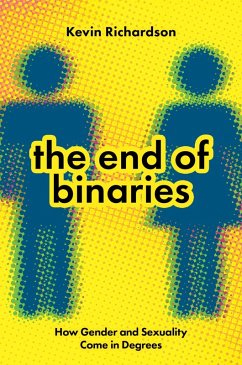We live in a world in which the boundaries of gender and sexual orientation are increasingly being contested. Gender categories like man and woman cannot do justice to non-binary, genderqueer, and trans people. Common categories of sexual orientation, like heterosexual and homosexual, are unhelpful for understanding a new generation of people whose sexual identities do not neatly fit within those categories. These various social binaries-man/woman, heterosexual/homosexual--are now a fraught way to understand social identity. At the same time as there is resistance to these binaries, there are also those who reinforce and protect them. Across the United States and other countries, there has been a wave of legislation targeting perceived threats to the gender binary system. Books with trans characters are being removed from the shelves of public libraries. There is a surge of legislation prohibiting trans women from using women's restrooms. There is legislation that challenges the legality of drag performances. All of these efforts are attempts to preserve the dominant gender and sexuality binaries. The End of Binaries articulates a philosophical alternative to these binary ways of thinking about gender and sexuality. It proposes a spatial theory of gender and sexuality, where a person's gender or sexuality should be understood as a location within a multidimensional space. Just as the boundaries of countries divide up geographical territories, social boundaries divide up regions of gender and sexuality space. And just as each person has an exact location represented by a GPS coordinate, each person has a gender and sexual location that represents their distinctive way of being gendered or sexually oriented. The spatial approach to gender and sexuality fundamentally understands gender and sexuality as complex, diverse, and continuous. The spatial framework is a more accurate (and more just) way to understand the diversity of gender and sexuality.
Bitte wählen Sie Ihr Anliegen aus.
Rechnungen
Retourenschein anfordern
Bestellstatus
Storno








